NYC and Boston brace for Hurricane Lee as forecast models show Category 5 storm could slam into the East Coast with 160mph winds and enormous storm surges
Hurricane Lee could hit the East Coast next week, bringing dangerous winds, rain and deadly storm surges to Boston and New York City as some models now show the Category 5 storm is targeting the US
On Thursday, Hurricane Lee raged in the open waters northeast of the Caribbean toward the Leeward Islands. The storm has picked up steam over the past day and now has wind speeds of 250 km/h.
“Lee continues to strengthen at an exceptional rate,” the National Hurricane Center said.
While it will be days before the storm hits the US, models now show its path could lead to the northeast by late next week.
The storm’s threat has reminded some people of 2012’s superstorm Sandy, which flooded parts of New York and caused more than 230 deaths in its path.
The image shows Hurricane Lee over the Caribbean on Thursday, the first Category 5 storm of the season
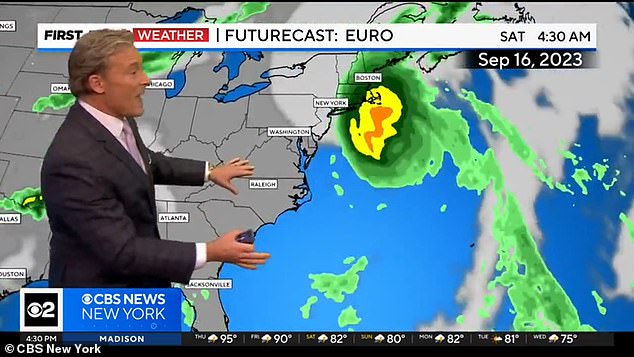
Some models suggested that Lee could head for New York late next week and turn northeast

The storm’s threat has reminded some people of 2012’s superstorm Sandy, which left parts of New York underwater and caused more than 230 deaths in its path
The only major hurricane to hit New York City was in 1938, but the city remains traumatized by Hurricane Sandy, which broke through in October 2012 and left 43 dead and an estimated $19 billion in damage.
Sandy was at its peak, over Jamaica, a Category 3 hurricane, but weakened to a post-tropical cyclone just before making landfall near Atlantic City, New Jersey on the evening of October 29, 2012.
Sandy ushered in a catastrophic storm surge, with tides reaching 12 feet above normal at Kings Point on the west side of Long Island Sound, and 12 feet above normal at the Battery at the southernmost tip of Manhattan.
As of Thursday night, it was too early to tell if Lee would be near the same Sandy-hit area.
But it will be a big storm: The forecast from the National Hurricane Center shows that Lee will strengthen into a huge storm on Friday evening, with winds of 260 km per hour.
Spaghetti models — maps showing computer simulations of where the storm’s center might be in a few days, given a range of variables — show Lee turning northeast and heading toward the east coast.
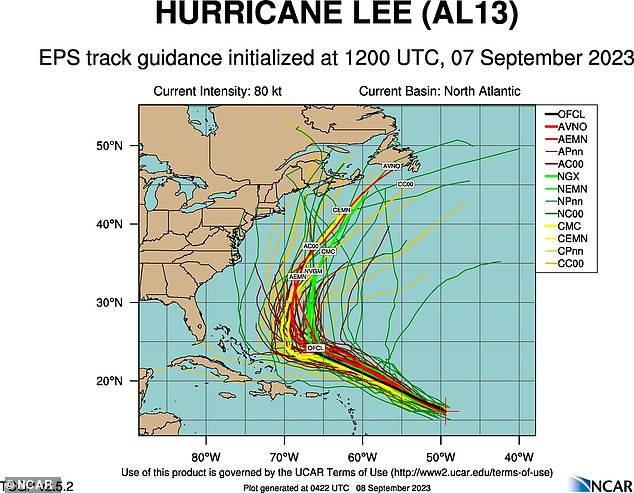
A spaghetti model shows the possible course of Hurricane Lee: the closer the lines are together, the stronger the forecast
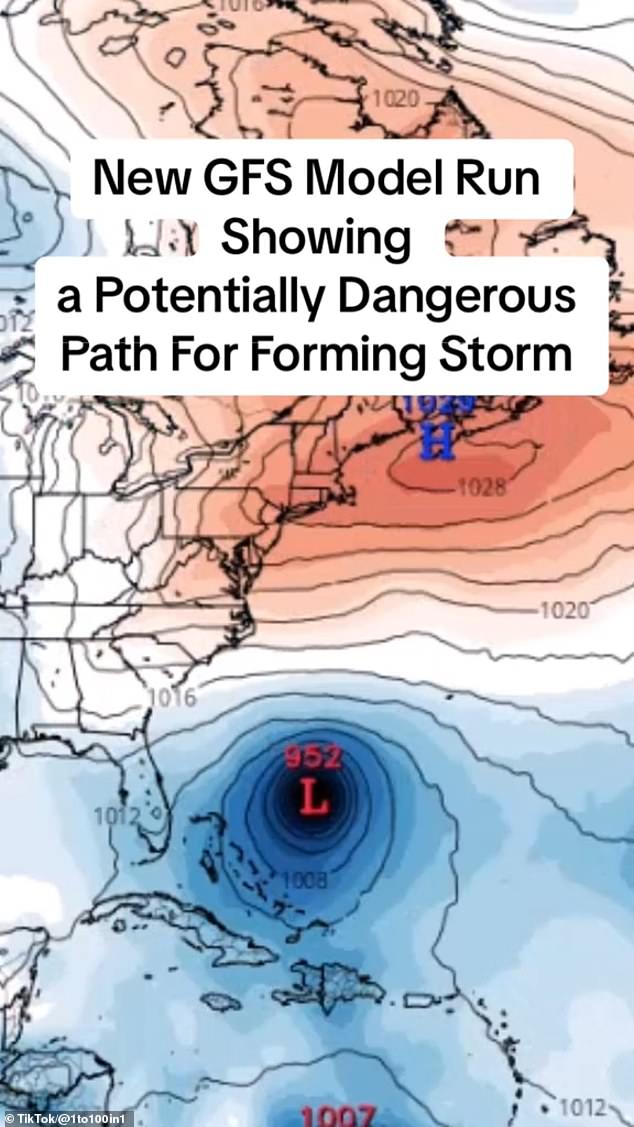
Lee is depicted in one model circulating north of Turks and Caicos. It is not expected to hit Florida
The closer the lines are together, the more confidence it gives forecasters in what the storm might do.
A European model, analyzed by CBS newspredicts that Lee will not make landfall and remain at sea, but will come close to the US mainland, bringing heavy rain and strong winds to the extreme eastern tip of Long Island, before heading towards Nova Scotia.
An American model, meanwhile, shows Lee scrapping Cape Cod and then sailing into the Canadian Maritimes.
As of Thursday night, Lee was about 700 miles east of the northern Leeward Islands.
President Joe Biden on Thursday got the hurricane’s final trajectory and details of ongoing preparations from the U.S. Federal Emergency Management Agency, which the White House said has deployed unidentified resources to Puerto Rico and the U.S. Virgin Islands.
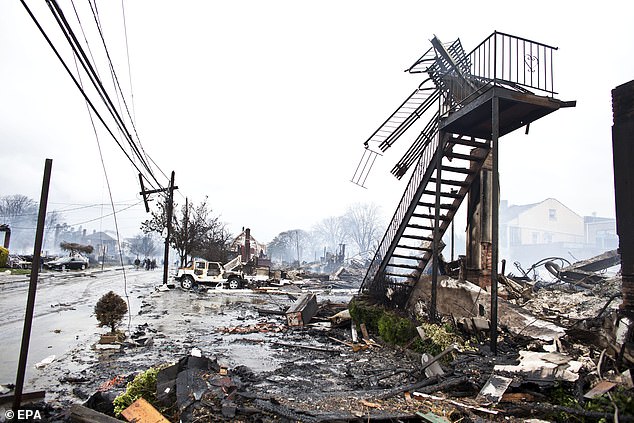
Houses are pictured in the aftermath of Sandy in Breezy Point, Queens, in October 2012
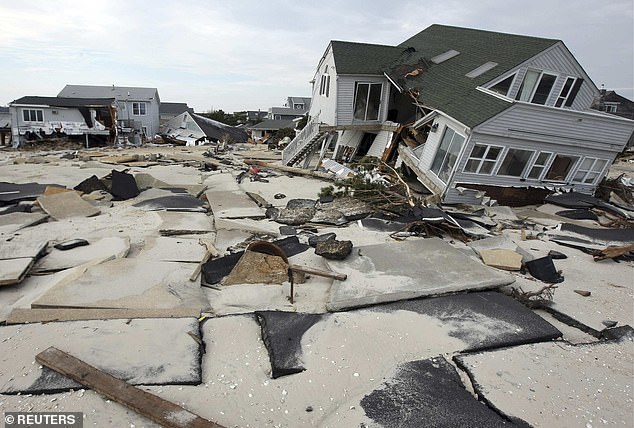
Ortley Beach, New Jersey, was devastated by Hurricane Sandy
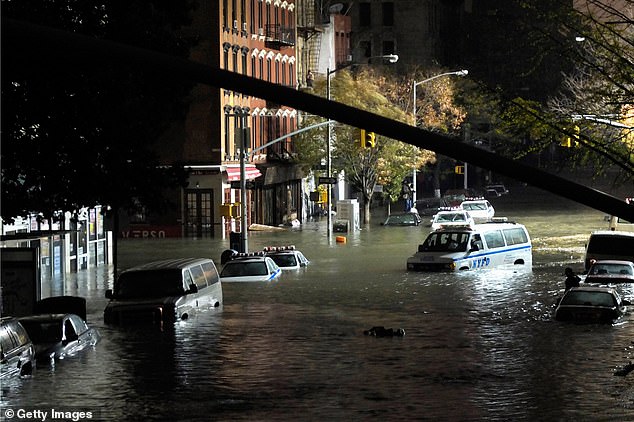
Manhattan’s East Village is pictured after Hurricane Sandy
Life-threatening surf was expected to reach the Lesser Antilles on Friday and hit the British and U.S. Virgin Islands, Puerto Rico, Hispaniola, the Bahamas and Bermuda this weekend, the center said.
“We’re going to see waves between 10 and 16 feet, so we don’t want anyone on the beaches,” said Ernesto Morales of the National Weather Service in San Juan, Puerto Rico.
The National Hurricane Center said dangerous surf and rip currents are forecast for most of the U.S. East Coast starting Sunday.
Lee is the twelfth storm of the Atlantic hurricane season, which runs from June 1 to November 30 and peaks in September.
Tropical Storm Margot became the 13th named storm after forming Thursday night. It was some 470 miles west-northwest of the Cape Verde Islands.
The National Ocean and Atmospheric Administration in August predicted 14 to 21 named storms this season, with six to eleven expected to become hurricanes, and two to five of those likely to develop into major hurricanes.
